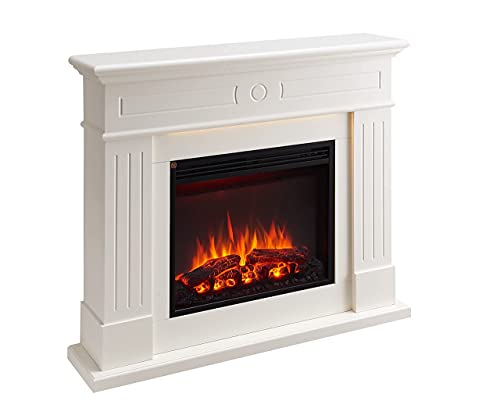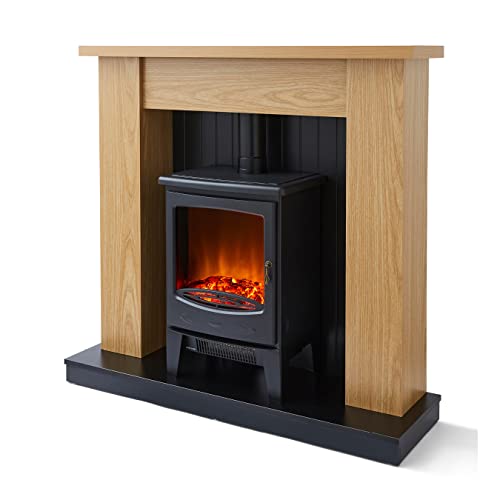15 Things Your Boss Would Like You To Know You'd Known About Fireplace
페이지 정보
작성자 Karine 작성일23-12-14 14:35 조회7회 댓글0건관련링크
본문
 What Are fireplace usa Accessories?
What Are fireplace usa Accessories?fireplaces cost are an integral part of many homes, providing warmth and comfort all day and night. They also add value and beauty to the house.
Homeowners can complete many of these projects, whether your fireplace requires a facelift or some simple repairs. However, certain tasks that require gas service should be left to trained professionals.
The Hearth
The hearth is the noncombustible floor to an open wood stove or fireplace uk. It could be an elevated area or the foundation of the fireplace. The word "hearth" is used to describe all of the components of the fireplace, such as the firebox, the floor that is raised and mantel, as well as the chimney, is a common term. It is nevertheless important to remember that there are specific fire safety guidelines regarding how a fireplace and its components should be built, so please consult your local governing body for more information.
They can be made from stone, bricks or cement. They are a great focal point for any room. They are designed to form a barrier between the fireplace and the flooring and protect against accidental fires that are caused by stray embers or logs. They can also be used to fireplaces store fireplace tools wood, tools, and other items.
Archaeological studies point to the importance of hearths as a key to early human existence. It is widely believed that they provided light, food, security, and warmth.
A hearth could cause serious health issues if it's not properly maintained. Smoke exposure raises blood levels of nitrogen, which prevents the red blood cells from delivering oxygen to tissues (methemoglobinemia). It can lead to nausea, dizziness and loss of consciousness in high levels.
Hearths used to be made of stone but they are now often made of brick or concrete. They are available in various shapes and sizes. Some cooking fireplaces for sale come with hearths that are able to cover the entire wall and others are smaller and purely decorative pieces that only cover the fireplace's opening. The material used in a hearth can significantly affect its appearance, cost and resistance.
The Surround
A fireplace surround, also referred to as a "mantel" is the frame above the hearth which enhances the atmosphere of an area. It is not only aesthetically appealing, but also practical as it keeps combustibles away from the flame and redirects heat back to the space. It can also be used as an area to display household items like mirrors or paintings.
Depending on the kind of fireplace, there are a variety of materials that can be used for the surround. Some are not combustible and others must meet the national and local fire codes for clearance distances from fire-prone objects.
Some of the most popular choices for surrounds include concrete, brick and stone. Certain stone surrounds are carved with decorative features like bevels or bolection moulding. They can also feature cornices or plinths. These details can give a home a more sophisticated look that complements the style.
Another option is to use plaster. This material is made from a mix of sand, cement and water and can be finished to match any architectural style. For instance, a textured surround can be a perfect fit for a Mission-style house.
The last popular choice for an interior fireplace surround is tile. It comes in a wide variety of colors and patterns. It can be used as an accent to the surround or spread across the entire wall for a dramatic focal feature. Tile is a great option for homes that have a contemporary or modern style.
The surround is the first thing people notice when they enter a room. It is important to select an item that will set the tone for your home and also to add value to your home.
The Firebox
The firebox is the part behind the fireplace's opening, where the fire can be constructed and maintained. The firebox is typically surrounded by a chimney, allowing smoke to escape. These traditional structures typically burn wood, however they can also burn gas, such as natural gas or propane.
Whatever fuel you are using the firebox is the place where the combustion takes place and must be properly maintained for safety and efficiency. The firebox is comprised of a number of important parts. This includes the grate as well as the fire poker and the air damper.
In addition to keeping the firebox and interior in good condition, it's important to clean your fireplace on a regular basis. The interior of the fireplace will be soiled by soot and dust because of its constant exposure to high temperatures. You can use a scraper or a wirebrush to clean the soot and ash that have been clogged on.
For durability and long-term longevity, it's recommended to line the inside of your fireplace with steel slag. These metals are resistant to corrosion and won't be rusty. They also offer more even heat distribution and last for longer.
In the end you can add some visual appeal to your fireplace by adding decorative fire logs or lava rocks. Some people also make use of modern decorative glass as an alternative. Make sure the fireplace you select is UL rated. This includes not only the fireplace, but the accessories and decorations you're adding to it.
The Burner
Burners are a popular way to add warmth and beauty to any room. They are available in a variety of shapes and sizes and shapes, making it easy to find one that fits your home. Some are even equipped with remotes so that you can control the flame from any place in the room. They are also safe to use, Cheapest Fireplace making them an ideal choice for outdoor and indoor areas.
There are many different types of burners, each with its own advantages and disadvantages. Some are more expensive, however they all have a myriad of advantages. Some are safer than other, and some work with or without chimneys. No matter what type of burner you select, make sure to follow the directions provided in the user's manual. This will ensure that the burner is properly installed and in conformity with all state and local regulations.
While burning wood is the most popular way to enjoy an open flame, it's not always the most practical. Besides the fact that it's messy and inconvenient, the smoke and soot it creates can be harmful to you and your family. Ethanol burners create water vapor, and very little CO2, which is more eco-friendly.
Another benefit of having a cheapest fireplace (please click the next webpage) is that it could be useful in the event of an outage. In winter, trees can get weighed down by heavy snow and ice, causing them to fall, and power lines below. You can use your fireplace to cook and keep warm if the electricity is out in your home. This is a great solution for homeowners who are prepared for the unexpected.
The Flu
The flue is a tunnel inside the chimney that carries gases and smoke out of the house. It is also an essential component for a safe, efficient fire. A flue is a source of updraft that draws air through the fire, allowing fuel to fully burn and reduces smoke.
The draft action of the flue prevents the hot gases produced by the fire from venting into your home. Instead they are taken out to cool. This regulated venting is what prevents carbon monoxide.
Regularly inspect your chimney for leaks and blockages. The flue pipe is a stainless steel tube or duct that runs through the center of the chimney, needs to be cleaned using specific cleaning equipment and chemicals. This includes a brush made of metal and the use of a drill using a masonry tool and masking tape and a utility knife for removing any creosote or soot that has accumulated on the flue's walls. pipe.
The flue should be kept closed when you're not using your fireplace will help prevent the conditioned air inside from escape. It also helps prevent rain or wind gusts from getting into the chimney and causing damage to your fireplace, wood stove or gas furnace.
The damper can be closed and opened with a latch or handle. It is located at the top of your fireplace, near the flue tile or pipe. It is designed to keep the flue open even when there is a fire burning however, it should be shut when not in use to reduce your energy bills and keep animals and precipitation out of your fireplace.

댓글목록
등록된 댓글이 없습니다.

